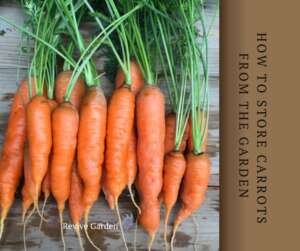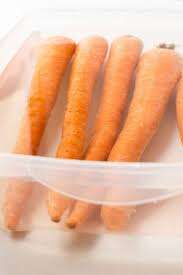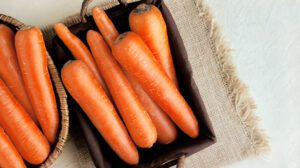Table of Contents
 If you’re into gardening, you will know that carrots are the easiest vegetables to grow. They don’t take long to grow and often result in a big crop to harvest. Even if you try all the carrot recipes, it’s impossible to consume all of it right away. Don’t worry, we won’t let your harvest soil. If stored in the right conditions, carrots can stay fresh for a long time.
If you’re into gardening, you will know that carrots are the easiest vegetables to grow. They don’t take long to grow and often result in a big crop to harvest. Even if you try all the carrot recipes, it’s impossible to consume all of it right away. Don’t worry, we won’t let your harvest soil. If stored in the right conditions, carrots can stay fresh for a long time.
You’ll learn all about harvesting and storing your carrots here. Once you know exactly how to store carrots from the garden, you’ll be able to make the most out of your harvest and use it for a long time.
Harvesting carrots
You can harvest the carrots while they are still small, or wait for them to grow thicker. However, don’t leave them in the ground for too long. As they grow bigger in size, the inner white channel that’s found in carrots will grow tougher and the outer skin will grow bitter.
Leaving them for too long may even split them open while still in the ground. You don’t want that since it lowers their shelf life and also makes them accessible to insects.
The best time to harvest the carrot crop is when their tops are at most one inch in diameter. This should occur in about one to two months after sowing. Follow the steps to harvest your carrot crop:
- Lift up the carrots from the soil for all those that come out easily.
- If they don’t come out easily, dig the ground around them to loosen the soil and then lift them up.
- Be careful not to pull too hard on the carrots while harvesting or they might break while still in the ground.
Storing carrots
Now that you have successfully harvested your carrot crop, you are ready to store it.
Steps to Take Before Storing
- Remember not to wash to carrots for storage. Only wash them before using them in the kitchen. Moisture speeds up the rotting of carrots so avoid it at all costs until you are ready to consume them.
- Remove the greens from all your carrots. The green part absorbs the moisture and flavor from your carrot. Don’t waste the green tops. You can use them in salads.
- Sort out through the harvest and separate the ones that are bruised or damaged in any other way. Use the damaged carrots right away since they won’t last long if stored.
- The carrots that you decide to store need to be left out in the open where they can air-dry.
- Leave the carrots to dry for a couple of hours before storing them.
Storage alternatives

There are multiple ways of storing carrots from the garden once they are ready. Here are some alternatives you can pick from depending on what suits you best:
Storing in the refrigerator

Store the carrots in the fridge in a perforated plastic bag. You can keep it in the vegetable drawer once inside the plastic bag but keep it away from apples and other such fruits and vegetables that release ethylene.
Keep checking to see if there’s moisture inside the bag that has the carrots. If you find any moisture, pat each of the carrots dry using a paper towel. It’s a good idea to include an absorbent kitchen towel inside the bag to keep the contents dry.
Freezing them
Another possible way to store them is to freeze them. It’s a suitable choice if you plan on storing them for long. Carrots, like most other vegetables, need to be blanched before freezing. Boil water in a large pot. Include peeled and cut carrots into the blanching basket and lower the basket into the boiling water. Keep the heat high and leave the carrots in boiling water for about 2 minutes.
Root cellar storage

